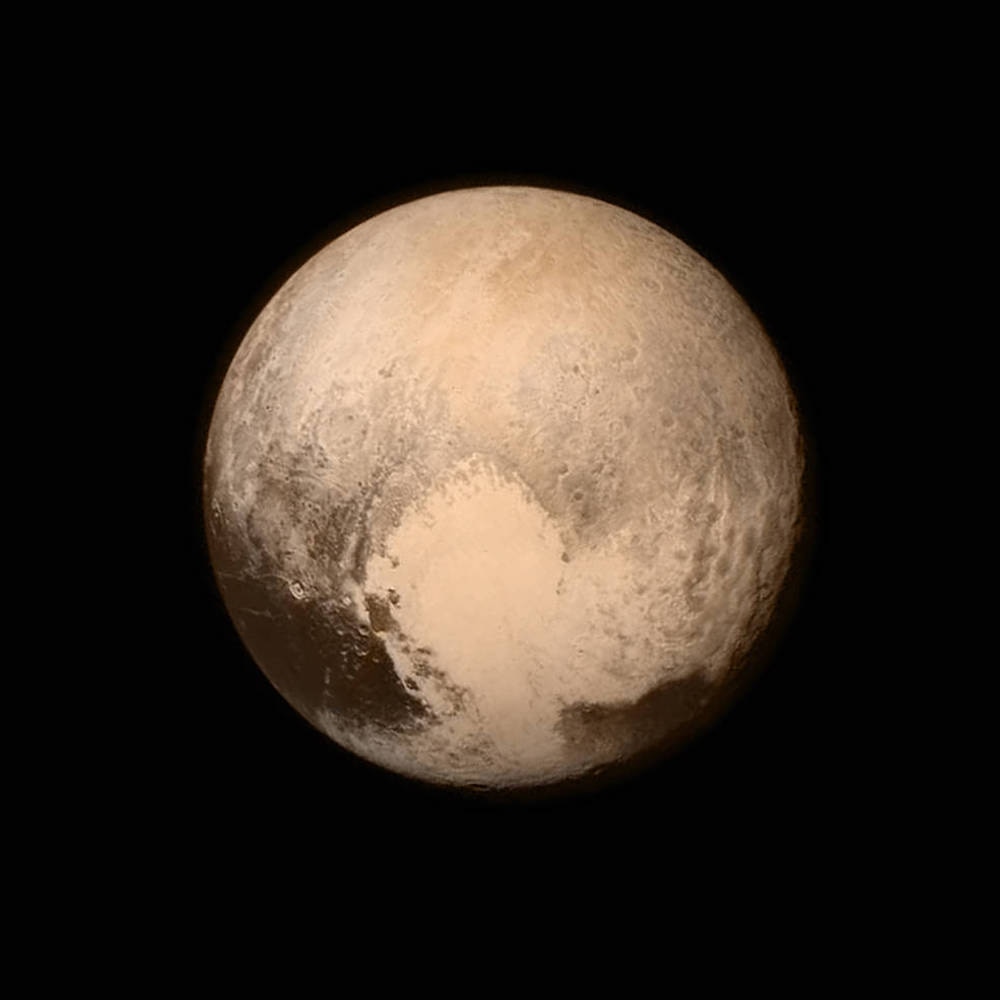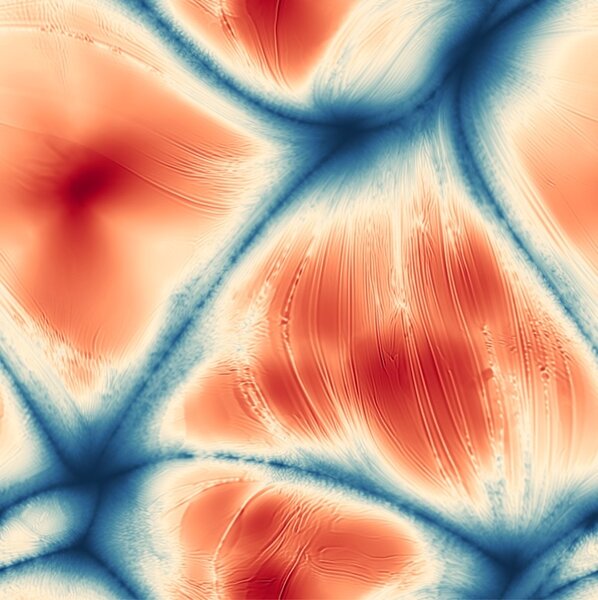Create a free profile to get unlimited access to exclusive videos, sweepstakes, and more!
The face of Pluto is slowly changing and now we know why
Pluto’s heart-shaped Sputnik Planitia beats with geologic activity.

The New Horizons mission, which flew past Pluto in 2015, gave us a stunning view of our favorite dwarf planet. Immediately, a world we’d previously only known from low-resolution images came to life in incredible detail. Among its features, one stood out more than the rest: a large heart-shaped formation spanning the planet’s face.
There, in the top-left portion of the heart is Sputnik Planitia, a large basin on Pluto’s surface. The area is an impact crater filled with nitrogen-ice which exhibits curious geometric shapes broken by troughs. The origin of those icy shapes has been a matter of some investigation as scientists worked to figure out precisely how they formed on a world so small and so far removed from the Sun.
That’s the subject of a paper by Stéphane Labrosse, professor of geophysics at ENS de Lyon, and colleagues, recently published in the journal Nature.
Labrosse was at a conference a few years ago where he met with a colleague who explained the features of Sputnik Planitia through convection with internal heating. If those processes were present on Pluto, they could explain the structures we find there, but there was a problem with that explanation which Labrosse couldn’t shake.
“In rocky mantles of planets, we have radioactivity which heats structures more from within than from below. It made a lot of sense except that we don’t expect any radioactivity in nitrogen ice. If there is radioactivity in Pluto, it’s most likely concentrated in the core,” Labrosse told SYFY WIRE.
Working with colleagues, Labrosse began puzzling over alternative solutions and had his eureka moment while reminiscing about a vacation he took 20 years prior.
“We were sitting in a hot spring during summer and when you get out, the water you have on your body evaporates very fast and it’s actually a good cooling agent. Then we thought about sublimation as something that would happen the same way, cooling the surface,” Labrosse said.
With a hypothesis in hand, the team set to work making models of Pluto’s climate to see if they could work out the mechanism which results in Sputnik Planitia’s nitrogen ice polygons. Building those models was a challenge because so many of the necessary parameters aren’t well defined. Though, they could make some inferences from direct observations. The pits which break up each ice block provided a clue.
“If you have natural undulations on the surface the sublimation will be increased in the troughs compared to the ridges,” Labrosse said. “Because of that, you tend to increase the undulations and make these pits. If the viscosity is very low, the pits wont’ last. They’ll collapse. Looking at the pits we can get constraints on the minimum viscosity needed to maintain them.”
You can watch a similar process unfold with water ice in your freezer. Ice cubes left for a long time will shrink and eventually disappear even while the temperature is maintained. The water undergoes a phase change from solid directly to gas without entering into a liquid state in-between.
Inconsistencies in the starting shape of nitrogen ice on Pluto cause this sublimation to happen unevenly, building troughs which cut their way through the surface leaving complex geometric structures behind. Pluto offers a perfect experimental setting for understanding these sorts of geologic activities because the environment is uncomplicated by other factors we experience on Earth, like the movements of liquid over the surface or the impact of biology. It also offers clues to what might be going on elsewhere.
“For this to happen, we need to have ice that is in equilibrium with the atmosphere, and which has low viscosity. Nitrogen is very good for this, but maybe also methane or something like that could work. Objects like Eres or Makemake haven’t been surveyed or visited by spacecraft, but we could expect something like this to happen there.”
It’s cold out there at the edge of the solar system, but it isn’t static. Pluto has a slowly beating pulse carving intricate patterns on its face, for us to look upon in wonder.



























